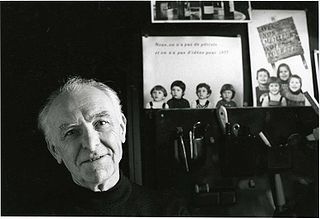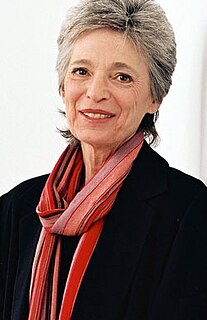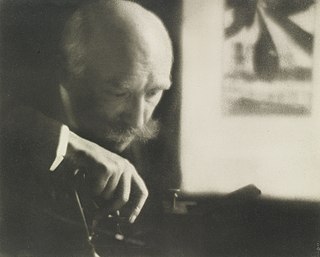
André Kertész, born Andor Kertész, was a Hungarian-born photographer known for his groundbreaking contributions to photographic composition and the photo essay. In the early years of his career, his then-unorthodox camera angles and style prevented his work from gaining wider recognition. Kertész never felt that he had gained the worldwide recognition he deserved. Today he is considered one of the seminal figures of photojournalism.

Robert Doisneau was a French photographer. In the 1930s, he made photographs on the streets of Paris. He was a champion of humanist photography and with Henri Cartier-Bresson a pioneer of photojournalism.

Jean-Marc Bustamante is a French artist, painter, sculptor and photographer. He is a noted conceptual and installation artist and has incorporated ornamental design and architectural space in his works.

Lynne Cohen was an American-Canadian photographer.
Louis Stettner was an American photographer of the 20th century whose work included streetscapes, portraits and architectural images of New York and Paris. His work has been highly regarded because of its humanity and capturing the life and reality of the people and streets. Starting in 1947, Stettner photographed the changes in the people, culture, and architecture of both cities. He continued to photograph New York and Paris up until his death.

Julien Vallou de Villeneuve was a French painter, lithographer and photographer.
Jean Pierre Philippe Lampué (1836–1924) was a 19th-century French politician and photographer who worked for the "École of Beaux Arts of Paris".

Pierre Dubreuil was a French photographer, born in Lille, who spent his career in France and Belgium. As a pioneer of modernist photography, Dubreuil embraced innovative techniques and ideas that were celebrated, criticized, and at times, overlooked. Over the course of his career, which was interrupted by both World Wars, Dubreuil's work was shown at the Photo-Club de Paris, the Albright Gallery exhibition in Buffalo, New York, the Little Gallery of the Amateur Photography Magazine in London, and the Royal Photographic Society. In 1988, more than forty years after Dubreuil's death, photographer and collector Tom Jacobson revived interest in his work, seeking out long-forgotten and displaced works that culminated in an exhibition at the Musée d'Art Moderne, Centre Georges Pompidou in Paris.

A chemigram is an experimental piece of art where an image is made by painting with chemicals on light-sensitive paper.
fotoform was an avant-garde photography group founded in 1949 by six young German photographers, Siegfried Lauterwasser, Peter Keetman, Wolfgang Reisewitz, Toni Schneiders, Otto Steinert and Ludwig Windstoßer.
Steven Franklin Joseph is a collector and historian of photography, active in Belgium.
Diana Lui is a Franco-Belgian artist, photographer and filmmaker of Chinese origin. Diana Lui is best known for her large format photographic portraits of today's growing hybrid generation of multicultural and multiethnic individuals.

Thomas Devaux, born in 1980 in Marcq-en-Barœul (North), is an artistic photographer from France. He lives and works in Paris.
François Tuefferd was a French photographer, active from the 1930s to the 1950s. He also ran a darkroom and gallery in Paris, Le Chasseur d'Images, where he printed and exhibited the works of his contemporaries. His best-known imagery features the French circus.
Charles Leirens was a Belgian photographer and musician.
Gottfried Jäger is a German photographer, photo-theorist and former university teacher.
Rogi André was a Hungarian-born French photographer and artist. She was the first wife of André Kertész.

Les 30 × 40 or Le Club photographique de Paris was a photography club created in Paris in 1952 by Roger Doloy who was its president, with vice-president Jean-Claude Gautrand, photographer and author, and honorary president Jean-Pierre Sudre, professional photographer.
Jean-Claude Lemagny is a French library curator and historian of photography; a specialist in contemporary photography, he has contributed to the world of fine-art photography in several roles.
Andreas Müller-Pohle is a German photographer, media artist and publisher. He is considered an important representative of experimental photography and is the originator of the theory of "Visualism".









